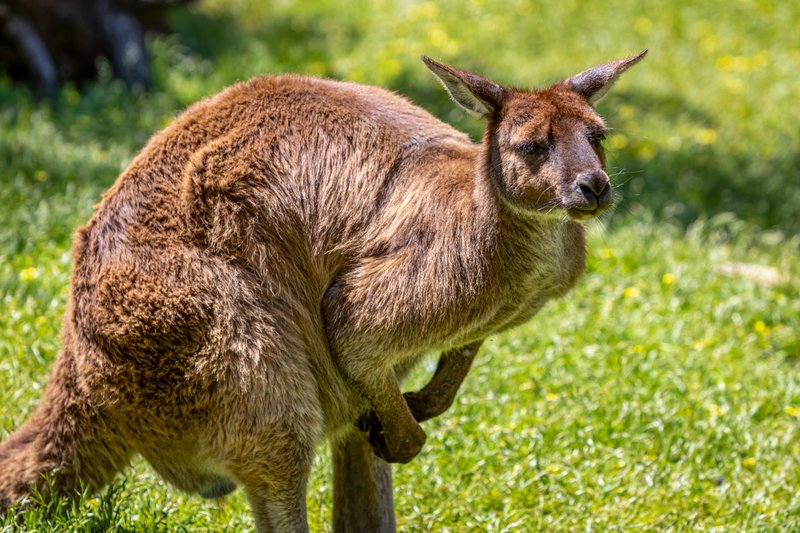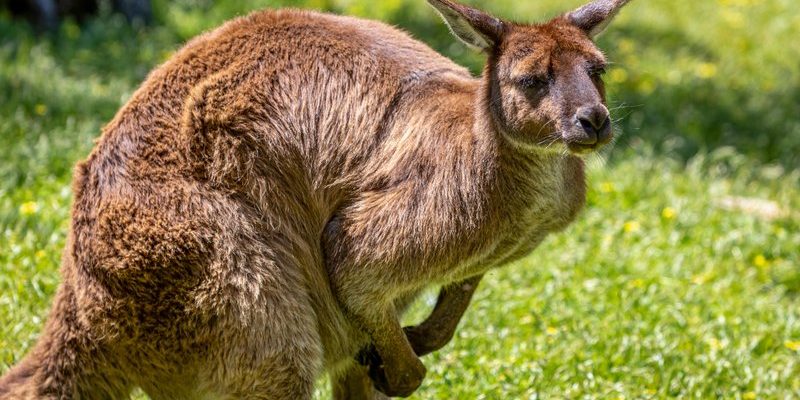
The Status of Kangaroo Populations
When we talk about whether kangaroos are endangered, it’s important to understand that not all species are in the same boat. There are four main species of kangaroos: the red kangaroo, eastern grey kangaroo, western grey kangaroo, and the antilocapra. The red kangaroo, for example, is currently not at risk. In fact, it’s the most abundant of all kangaroo species, thriving in arid regions across the continent.
On the flip side, the species such as the eastern grey kangaroo have had their populations fluctuate significantly. Over the last few decades, they’ve experienced booms followed by busts due to heavy hunting and environmental changes. It’s like a rollercoaster ride—up one moment and down the next. While conservation efforts have helped, the shifting balance means constant monitoring is key to ensuring their future.
The western grey kangaroo has faced its own struggles. It’s not considered endangered, but certain populations are vulnerable due to urban development and land changes. Here’s the thing: every kangaroo is part of a complex ecosystem. When one species struggles, it can have a ripple effect on others in the environment.
Major Threats to Kangaroo Survival
So, what’s putting kangaroos in jeopardy? One major factor is habitat loss due to urban expansion and agricultural practices. As cities grow and farmland spreads, kangaroos lose the places they call home. Imagine a family being forced to move because their neighborhood is being bulldozed for new buildings. That’s exactly what’s happening to the kangaroo populations.
Another significant threat is climate change. Changes in weather patterns can affect food sources and water availability. During droughts, for example, kangaroos might struggle to find enough vegetation to eat. If kangaroos can’t find food, their numbers can drop quickly. It’s like trying to run a marathon on an empty stomach—eventually, you’ll run out of steam!
Lastly, hunting and culling practices also impact kangaroo populations. In some areas, kangaroos are hunted for meat, leather, and to manage their numbers because they’re seen as pests. While regulated hunting can be sustainable, it’s a delicate balance. Over-hunting can lead to population declines, and without proper regulations, it can escalate quickly.
Conservation Efforts in Australia
Australia has recognized the importance of protecting its wildlife, including kangaroos. Various organizations and government bodies are working to create and implement conservation strategies. For instance, certain regions have established wildlife corridors to help kangaroos move safely between habitats. This way, they can find food and mates without crossing dangerous roads or urban areas.
Additionally, education plays a crucial role. Many programs are focused on raising awareness about kangaroo conservation. By teaching people about the challenges kangaroos face and the importance of maintaining healthy populations, we can create a more informed public ready to support these efforts. It’s all about understanding that every kangaroo matters—they’re not just cute animals hopping around; they’re part of a larger ecosystem that needs to be preserved.
Another interesting effort is the use of technology in conservation. Researchers are now using drones and GPS tracking to monitor kangaroo movements and populations. This high-tech approach allows scientists to gather data quickly and efficiently, ensuring better management strategies and quicker responses to changes in populations.
The Role of Legislation in Kangaroo Protection
Legislation is another significant piece of the puzzle when it comes to protecting kangaroos. Various laws and regulations in Australia are designed to oversee hunting quotas and protect certain species. The National Parks and Wildlife Act is one such law that plays a key role in conservation efforts. It helps to establish protected areas for wildlife, which can benefit kangaroo populations by giving them safe spaces to thrive.
However, there’s still work to be done. Some argue that existing laws need to be more stringent to ensure sustainability. After all, regulating hunting is a good start, but we also need to consider habitat preservation and addressing climate change. It’s like putting together a puzzle—every piece has to fit just right to see the complete picture of conservation success.
Community Involvement in Conservation
It’s not just scientists and policymakers who can make a difference; everyday people can play a vital role in kangaroo conservation, too. Community involvement can take many forms, from volunteering at wildlife shelters to participating in local conservation events. This grassroots effort brings awareness and action to the forefront.
For example, local groups often organize clean-up days in habitats that kangaroos frequent. By removing litter and restoring natural environments, these communities help create better living conditions for kangaroos. Plus, it’s a great way to connect with nature—and each other!
You might also find eco-tourism opportunities that directly benefit kangaroo conservation. Some tours are designed to educate visitors about these amazing animals while contributing to local conservation efforts. This form of tourism supports the local economy while fostering appreciation for kangaroos and their habitat. So, if you’re considering a trip to Australia, think about engaging in experiences that benefit the wildlife!
What You Can Do to Help Kangaroos
If you’re passionate about helping kangaroos, there are several ways you can get involved, even from afar. Here’s a quick list:
- Educate yourself: Read up on kangaroo conservation issues and share your knowledge with others.
- Support conservation organizations: Consider donating to or volunteering with groups that focus on wildlife preservation.
- Advocate for sustainable practices: Encourage sustainable agricultural practices in your community to help protect natural habitats.
- Be an eco-tourist: Plan trips that support wildlife conservation and responsible tourism.
Each small step contributes to a larger effort. Supporting sustainable practices at home helps create a ripple effect that can benefit wildlife worldwide. You might be surprised how even the simplest actions can lead to positive change for kangaroos and their ecosystems.
In conclusion, while the question “Is the kangaroo endangered?” doesn’t have a simple answer, it’s clear that their future depends on the actions we take today. While some populations are stable, others need our help to thrive. As we navigate the challenges of habitat loss, climate change, and hunting, it’s essential to work together—communities, governments, and individuals alike—to ensure these incredible creatures continue to hop through the Australian landscape for generations to come.
So, the next time you think of kangaroos, remember: they’re not just a symbol of Australia. They’re part of a delicate balance that needs our attention. By staying informed and getting involved, each of us can play a role in their conservation story. Let’s make sure their hopping days aren’t just a fond memory!

